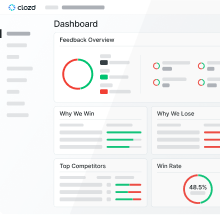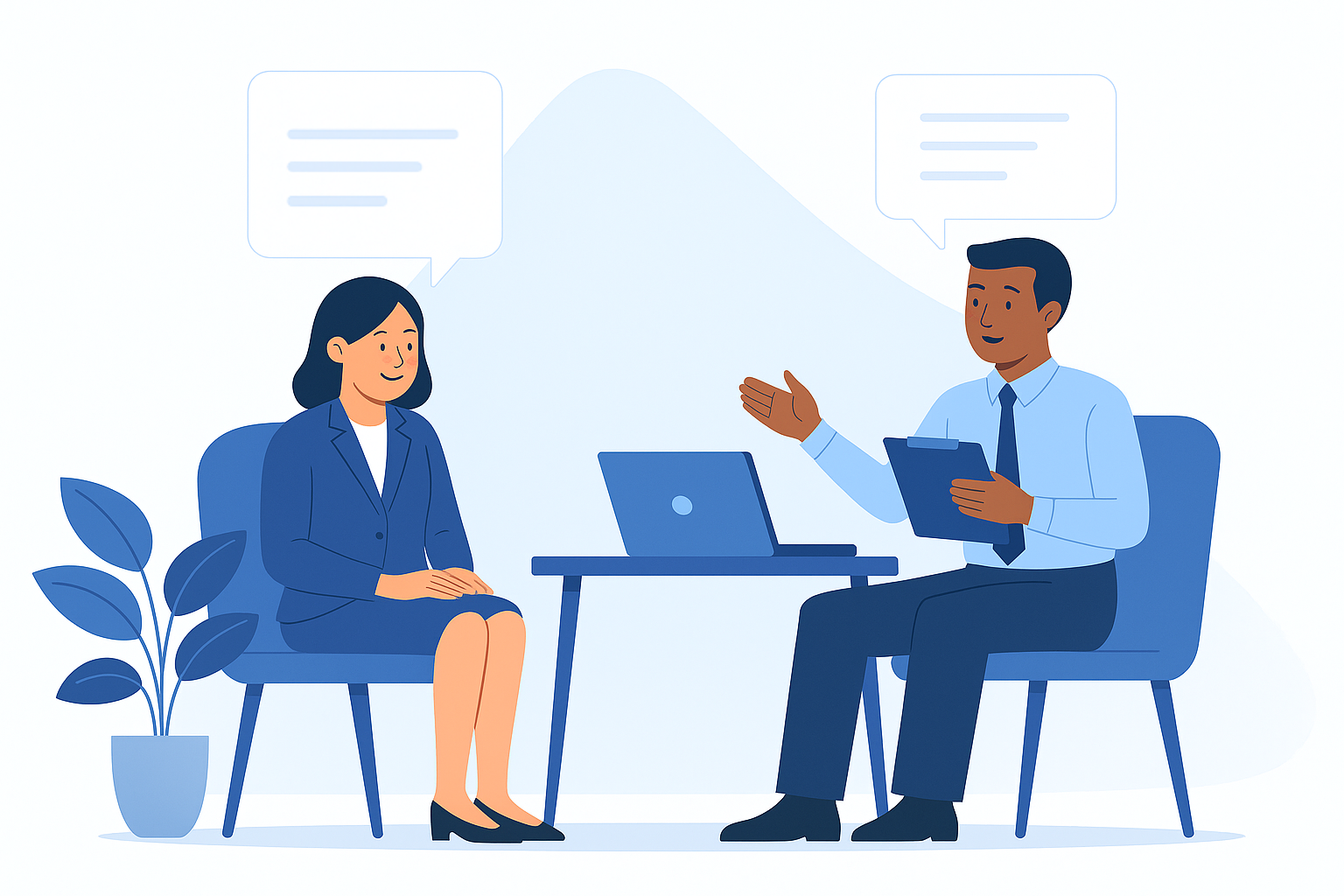TL;DR
- You can leverage buyer feedback to find product-market fit and stay ahead of the competition.
- Conducting third-party interviews with target personas helps you understand their key problems and outcomes.
- Use buyer feedback to understand—and meet—your customers' needs and evolve faster than your competitors.
- By asking your buyers (soon after you lose a deal), you can reliably identify your real competitors.
- Be humble and listen to feedback to improve and align perception with reality.
Leverage your buyers to stay ahead of the competition
I don’t care if you earned your degree from Harvard Business School or the “University of Experience.” It also won’t matter if you’re a leader in marketing or sales.
One of your most fundamental lessons is staying ahead of the competition.
In 1985, Michael Porter came up with the Sustainable Competitive Advantage Theory—which was hard enough to do before the rate of innovation exploded thanks to the tech boom.
Over the last few years at Clozd, we’ve seen the rise of AI rewrite the rules for several of our clients’ industries. What’s been amazing to see is that, for some of our clients, staying ahead of the competition seems to be second nature. Other companies, meanwhile, have found ways to blindside former industry leaders and steal their market share.
The difference comes down to how good of a job they can do at leveraging their buyers’ feedback to stay ahead of the competition.
Tip #1: Use buyer feedback to find product-market fit
One of my clients sells an enterprise-level platform with an entire suite of solutions. Each of those solutions has a different value proposition and a host of unique competitive solutions fighting for the attention of their target personas.
They learned to stay ahead by using Clozd to consistently conduct a target number of third-party interviews with each of their target personas every month. A few of the critical questions we ask each month include:
- What was the key problem you were trying to solve?
- What were the outcomes or metrics that you planned to measure?
By capturing feedback directly from their buyers, that client effectively created a real-time pulse of their prospects’ most important priorities and how they feel about the viability of that client’s solutions.
In the early days of their win-loss program, we taught that client about perceived product gaps that needed to be solved. In one case, we learned that a competitor simply had better messaging around an integration. Now that the program is more mature, we’ve gained insight into new problems their existing product suite can solve.
Tip #2: Use buyer feedback to evolve faster than your competitors
The best framework I’ve encountered is the “Strategic Sweet Spot,” which is your ability to “meet customer's needs in a way that rivals can't.”

To hold onto a competitive advantage, you need to keep a constant eye on what your competitors are communicating to buyers. That way, your product features and messaging can always meet the needs that your competitors can’t.
Conducting win-loss interviews as soon as possible once a deal closes is the best way for decision-makers to communicate what they heard from your competition—especially when an unbiased party conducts those interviews. Decision-makers are usually willing to be open about what they learned in an evaluation to justify their decision, and those learnings can be applied to your current prospects.
Tip #3 Don’t solve the wrong problem
You’d be surprised how often your biggest competitor is *not actually* your biggest competitor.
I’ll elaborate.
If I asked you to name McDonald’s’ biggest competitor, you might think of a classic rival like Wendy’s or Burger King. And that makes sense, because they’ve spent so long battling each other for burger dominance. If McDonald’s had a CRM, isn’t Wendy’s certain to be the first competitor in the dropdown?
As it turns out, most people were actually thinking about whether they wanted to go to McDonald’s or just make a sandwich at home—but that isn’t an option in the CRM.
Most of my B2B clients have a classic rival that gets mentioned at some point in the sales cycle. So, of course, that rival gets tagged as the primary competitor in the opportunity loss reason. Then the organization goes on to see in their latest Q4 report that they encountered their top competitor in 75% of deals.
It’s an easy narrative to attack—but it’s also completely wrong.
More than once, my client learned that their perceived main competitor might have been present in that deal, but they both lost to a third alternative—one that may or may not have been included as an option in the CRM.
In that scenario, buyers will help you understand which option you’re really losing to (or winning against). Whether that was a new competitor, a different type of substitute, or doing nothing altogether.
Tip #4: Ask your buyers when you lost the deal
Would you expect a professional basketball team to adopt the same off-season training plan no matter when their season ended—whether they lost in Game 7 of the NBA Finals or hadn’t made the playoffs at all?
One scenario calls for a refine-and-refuel approach, while the other may call for a complete overhaul of its routine, roster, and staff.
Similarly, I’ve had clients with such a high level of sales execution that they’re almost always ranked as one of the top two vendors in highly competitive RFP cycles. Because it’s so rare for them to come up short after 6–9 months of proof of concepts, many of their win-loss learnings are ways to refine their executive-level messaging.
Another client learned they’re often removed from consideration in both mid-market and EMEA markets before prospects invite their shortlist to come back for a final demo. In some cases, it was based largely on a per-user pricing model that was viewed as unscalable (even though the total cost of ownership was usually competitive). Other prospects disliked the fact that responses to their RFP often appeared to be copy-and-pasted from other documentation instead of being tailored.
Both clients took action based on buyer feedback to improve their win-rate, even if the type and size of their changes were drastically different.
Tip #5: Be humble enough to listen
It’s common for an executive, product leader, or sales rep to hear feedback they disagree with.
The buyer may have cited a missing feature made available last year. Or they saw that, near the end of the quarter, you used an aggressive sales tactic designed to force the sale.
I’ll always be grateful for one CEO who stepped in during an executive presentation that was getting a little heated. While different contacts debated with me about why the quotes I collected from buyer interviews were wrong, that CEO stepped in to remind the room: “The perception of the buyer is the reality of the buyer.”
When prospects are willing to give you feedback, it’s usually because they genuinely want you to get better—and not because they’re bringing an agenda. The organizations that run the best win-loss analysis programs take their feedback at face value—and then they do everything they can to make their perception match the reality they want their prospects to buy.











.svg)



.png)







.svg)

.svg)




